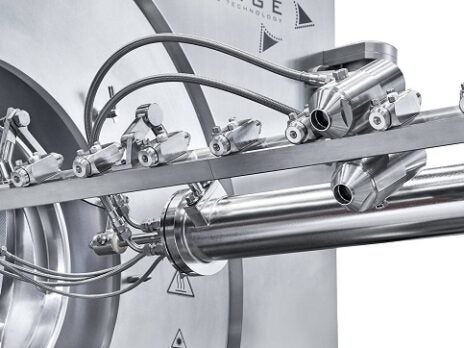Pharmaceutical Technology spoke to Lödige Process Technology about the requirements and challenges of the tablet coating process and what sets Lödige’s tablet coating solutions apart.
Very simply, what are the primary requirements that pharmaceutical tablet coating must meet nowadays?
Nowadays coaters must meet a number of requirements. They must be flexible in terms of batch sizes, they must work reliably and their process parameters must be reproducible. Other requirements include a fast coating speed, high spray rates, a high coating efficiency and a minimum of spray losses. Air distribution in the coater drum must be even in order to get an even temperature distribution. Furthermore, for pharmaceutical applications, coaters require good cleaning capabilities (CIP) and machines have to be capable for containment applications.
What are some of the challenges caused by traditional heat distribution and airflow channelling methods of tablet coating?
Traditional air distribution solutions allow the airflow to enter the drum at different positions and with different flow speeds. As a result, the temperature distribution in the tablet bed is uneven, limiting and disturbing the coating process. In addition, turbulences of airflow inside the drum may disturb the spray mist and lead to increased spray drying of coating solution and drum/spray arm pollution.
How does your approach to tablet coating address these issues?
Lödige’s innovative air distributor channels the air into the drum very smoothly, which leads to even temperature distribution within the tablet bed. The airflow can enter the coating drum from all sides and is channelled in a controlled way through the tablet bed. As a positive result, the disturbing effects of the spray mist are minimised.
How do your methods ensure good coating quality while reducing the time taken by the coating process?
The prolonged coating drum leads to a stretched tablet bed and thereby to a bigger available spraying surface. Hence, we can operate the system at higher spray rates while keeping the coating quality high. An ideal air distribution prevents uneven temperature distribution and leads to highly efficient coating processes with maximum coating efficiency and minimal losses due to spray drying.
Are your methods compatible with older/existing coating equipment or do they require new equipment to be installed?
As the coating drum and air distribution were completely re-engineered and re-designed, the new advantages are applicable only to our new coaters. Yet existing coating processes from older coaters can normally be transferred to our new coater without difficulty. It will then run at shorter coating times with greater efficiency.
Does your methodology differ for smaller batches compared with larger ones?
No, because all coaters are generally designed the same way independently from the coater size. Hence, the technique is independent of the batch or coater size. Furthermore, there is already a big variability of batch sizes possible within one coater from 20-100% of the normal working volume, so there is no need to change the coater size.
Does the tablet coating process differ when producing tablets for pharmaceutical applications compared with applications for other sectors?
Typically, the coating process itself doesn’t differ. Process parameters may vary depending on product and recipe, but the general process stays the same. Differences compared to coating in other sectors (chemicals, food etc) refer more to machine features and technical design of peripherical equipment (air handling units, cleaning systems, controls etc), which can be at a lower standard than for the pharmaceutical industry.



